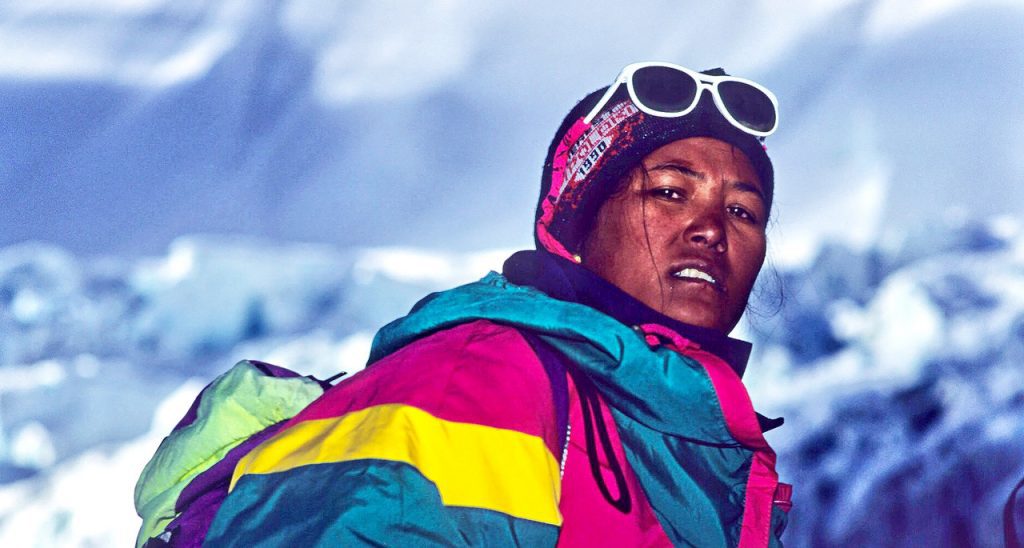New Documentary on First Nepalese Woman Up Everest

Pasang Lhamu Sherpa reached the summit of Mount Everest on April 22, 1993 and became the first Nepalese woman to summit the mountain.
She had attempted Everest three times before succeeding, but had climbed Mont Blanc, Pisang Himal, Cho Oyu and Yalapic before.

She reached the top of the 8,848-metre peak with five Sherpas: Sonam Tshering Sherpa, Lhakpa Norbu Sherpa, Pemba Dorje Sherpa and Dawa Tashi Sherpa.
After teammate and five-time Everest climber Sherpa Sonam Tshering fell ill on the South Summit Pasang Lhamu tried to help, but he died.
While descending, Pasang Lhamu and the team were hit with bad weather. She died on the descent. Climber Vladas Vitkauskas helped move her body down the mountain.
She was the very first woman to be decorated with the “Nepal Tara (Star)” by His Majesty the King. In order to commemorate her feat, a life-size statue of Pasang Lhamu was erected at Bouddha, Chuchepati; a postage stamp was issued in her name; the Government of Nepal renamed Jasamba Himal (7,315 m) in the Mahalangur Range as Pasang Lhamu Peak; the Ministry of Agriculture named a special strain of wheat as Pasang Lhamu wheat; the Pasang Lhamu Memorial Hall was established in Dhulabari of Jhapa district in east Nepal; and the 117-Km Trishuli-Dunche road was named the Pasang Lhamu Highway.
Film-maker Nancy Svendsen, Alison Levine and others are currently working on a documentary on Pasang Lhamu. Titled The Glass Ceiling, there is currently a crowdfunding campaign to help share the story.
The documentary tells her story about reaching the summit, but having to fight racism and sexism to do so. Knowledgeable Himalayan climber Alan Arnette interviewed Svendsen about the project. Full interview here.
Arnette asked her: Nancy, what impression do you think Pasang would have wanted viewers of the film to have after watching it?
To which, Svendsen said: “I think Pasang’s dream was, yes to summit Everest, but in the bigger context it was to be allowed the same opportunities as women and men coming from more advantaged economic and cultural backgrounds. She didn’t want to be confined by the cultural norms of her birth.
“She chose to climb Mt. Everest as it was, for an uneducated Sherpa woman, the way to make her world bigger and have a seat at the proverbial table. I know Pasang would be deeply moved and proud of all the advances Sherpa and Nepali women have made in the decades since her death. I think Pasang would hope for men and women watching the film to be inspired to reach for “their own Everest” in whatever the situation in their own lives.”
Help support the documentary here.


